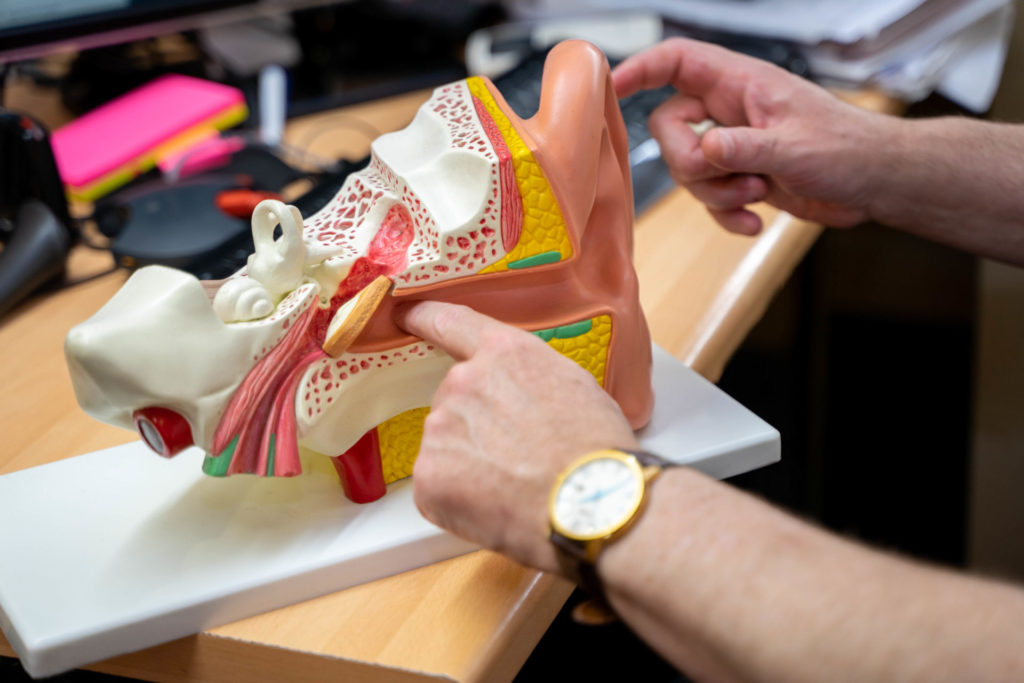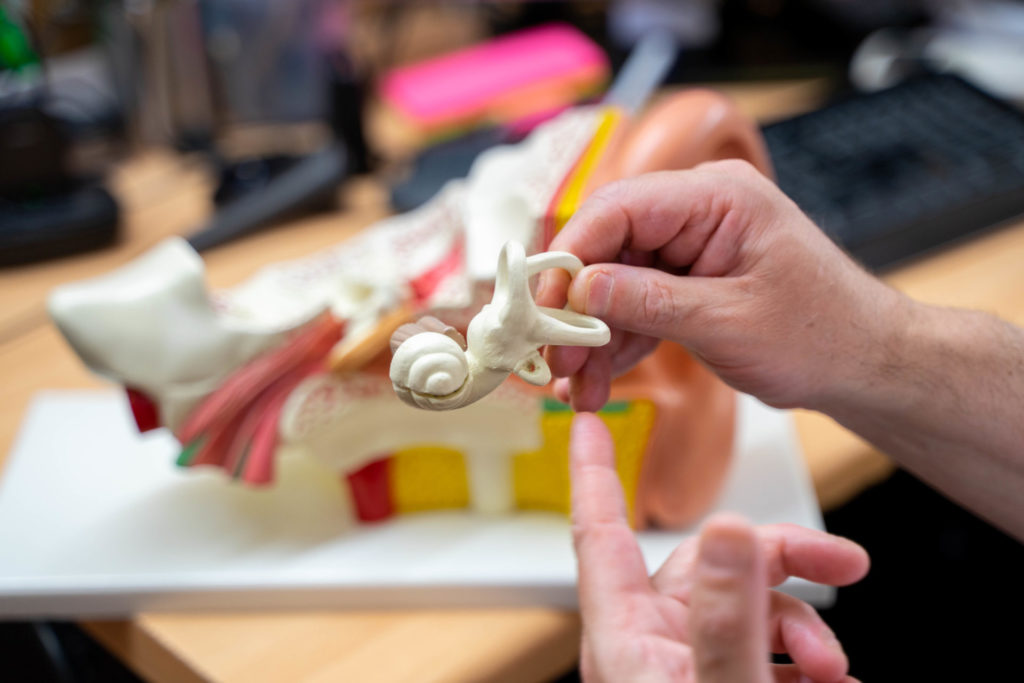Why do my ears pop?
Many of us have experienced the sensation of our ears ‘popping’ but what do we mean by this? Usually when on a plane, in a car, or anywhere when there is a steep incline or decline we sometimes experience a ‘pop’ sensation in one or both ears.
So, why does this happen?
Why do our ears pop?
The scientific name for this reaction is ear barotrauma. In a nutshell, the reason our ears ‘pop’ is due to the difference in air pressure inside our ears compared to the air pressure outside our ears. However, if we explore this further there are a series of events that occur and fully explain this strange phenomenon.
Our ears are made up of three different parts: the outer ear, middle ear, and inner ear. Within our middle ear, we have a certain amount of air sealed within the air space. The air pressure inside the ear is often extremely similar to the air pressure outside of the air. And is constantly monitored by your ears to try and stay at the same level of pressure you often don’t notice your ears adjusting the pressure.
Therefore, when going on a steep incline or decline e.g. plane, car, scuba-diving, mountain climbing, etc. The pressure in these areas can be significantly different from what your middle ear is used to. These drastic changes in air pressure then lead to the middle ear expanding or detracting so it is relative to the pressure around it. This expansion/detraction is what causes the ‘popping’ sensation.
Treatment
If you are currently suffering from ear barotrauma, the most well-known method of getting your ears to equalize in pressure is through the Valsalva method. You can complete this method by holding your nose pinched and blowing with your mouth closed. By doing this you should be able to open the eustachian tubes in your ears and allow some of the pressure and fluid stuck in the ear to be released. If on a plane, you can also use this method before ascent/descent to prevent your ears from barotrauma.
An easier method of treatment would be simply swallowing or yawning. By doing these actions the eustachian tube may open, as the muscles used for either swallowing or yawning are connected to the eustachian tubes.
To influence the body to produce more saliva and therefore swallow more, you could also suck a sweet to try and aid the built-up pressure.
Finally, there is another method much like the Valsalva method, however, rather than blowing you swallow instead – still whilst keeping your nose pinched. This method has been proven to be just as effective. So try both and see whether you have a preference.

Prevention
There are some methods to prevent ear barotrauma. The most effective method would be to purchase specialized earplugs which can block the outside pressure from affecting the pressure inside the ear. These earplugs can then filter the outside air into the middle ear slowly so it can be equalized at a steady pace.
Most of the treatment methods can also be used for prevention as well. For example, the Valsalva and Toynbee method can both be done before an ascent/descent to try and prevent ear barotrauma. Moreover, treatment methods such as yawning and swallowing can also be used as prevention.
Other prevention tips include trying to stay awake during the beginning and end of a flight as you will be able to prepare yourself to try to prevent ear barotrauma before an ascent/descent begins.
Finally, you can use a nasal spray 1 hour prior to landing. This is because it can help your nose reduce swelling and therefore helps your eustachian tubes open as they are connected to your nasal passage.
Ears still won’t pop?
Unfortunately even after trying all these methods some people find that their ears simply refuse to equalize in pressure. So why is this?
A buildup of fluid in the ear
When fluid is in the ear this will block the auditory tube and fluid will block the eustachian tube – therefore, pressure built up cannot be released. To relieve the pressure you will want to get rid of the fluid in your ear first. You can do that through these various methods:
- First, you can simply try tugging your earlobe to remove any fluid. Make sure that your head is tilted downwards to your shoulder and tug your earlobe gently.
- Another method is to create a vacuum using your hand. First, you need to cup your hand over your ear so that a tight seal is created around the ear. Once the seal is created you then push your hand onto the ear flattening it as it pushes and then resuming the cupping position away from the ear. You want to continue doing this at a rapid pace before finally tilting your head to the side to allow the fluid to drain.
If you are at home and not trying these methods in a car/on a plane etc, you can use items like a blow dryer to try and evaporate the fluid. Also, try placing a few warm drops of olive oil in your ear as this will repel fluids such as water. After placing the drops in your ear lie on your side for 10 minutes to allow the water to drain. Repeat for the other ear.

Excessive ear wax
Another reason why your ears won’t relieve the pressure is that they may be blocked with excessive ear wax.
The best way to remove excessive ear wax is always by seeking the help of a professional. Nathan Gluck Hearing Care offers same-day ear wax removal in North London. You can contact us here and we will be happy to remove any blockage.
You can find a few more reasons as to why your ears might still have a build-up of pressure here.
Get in touch
If you’re concerned you may have a problem with your hearing, or you’d like to arrange a hearing test for a family member, we’re here to help.
Nathan Gluck Hearing Care,
20 Wentworth Road,
Golders Green, London,
NW11 0RP, UK